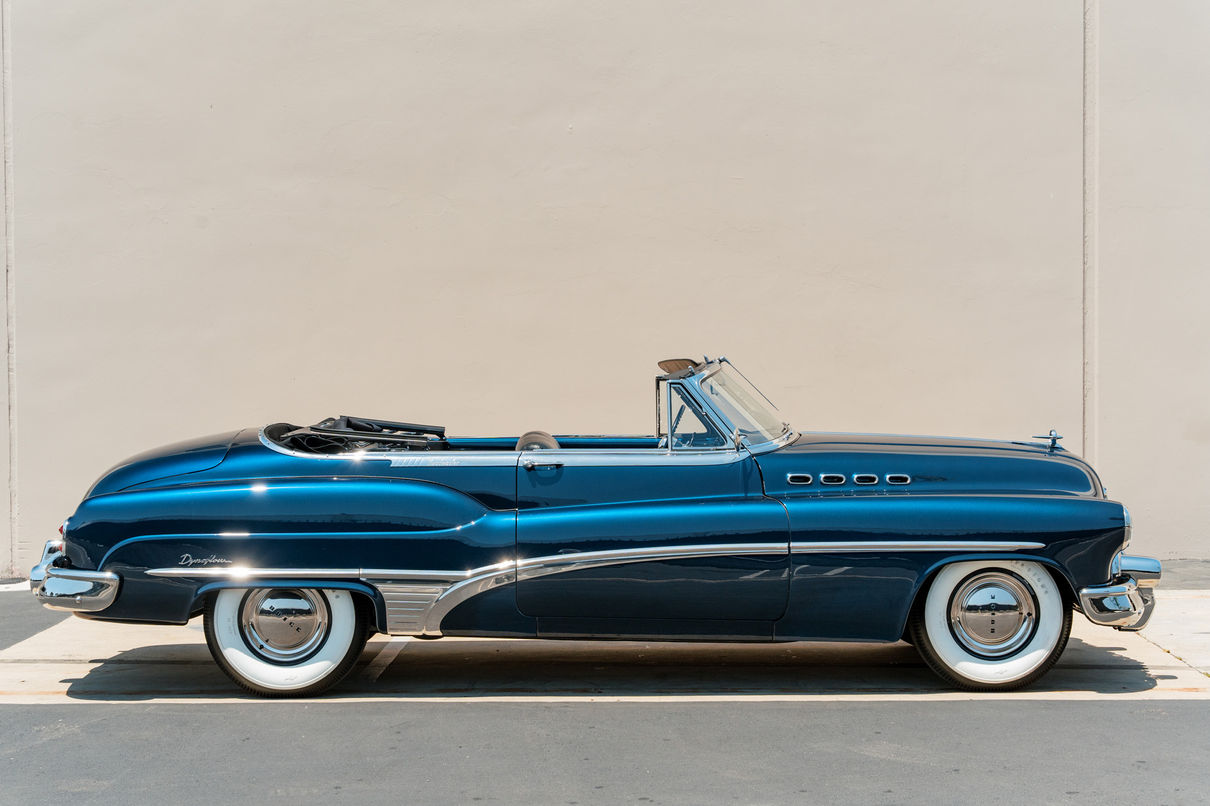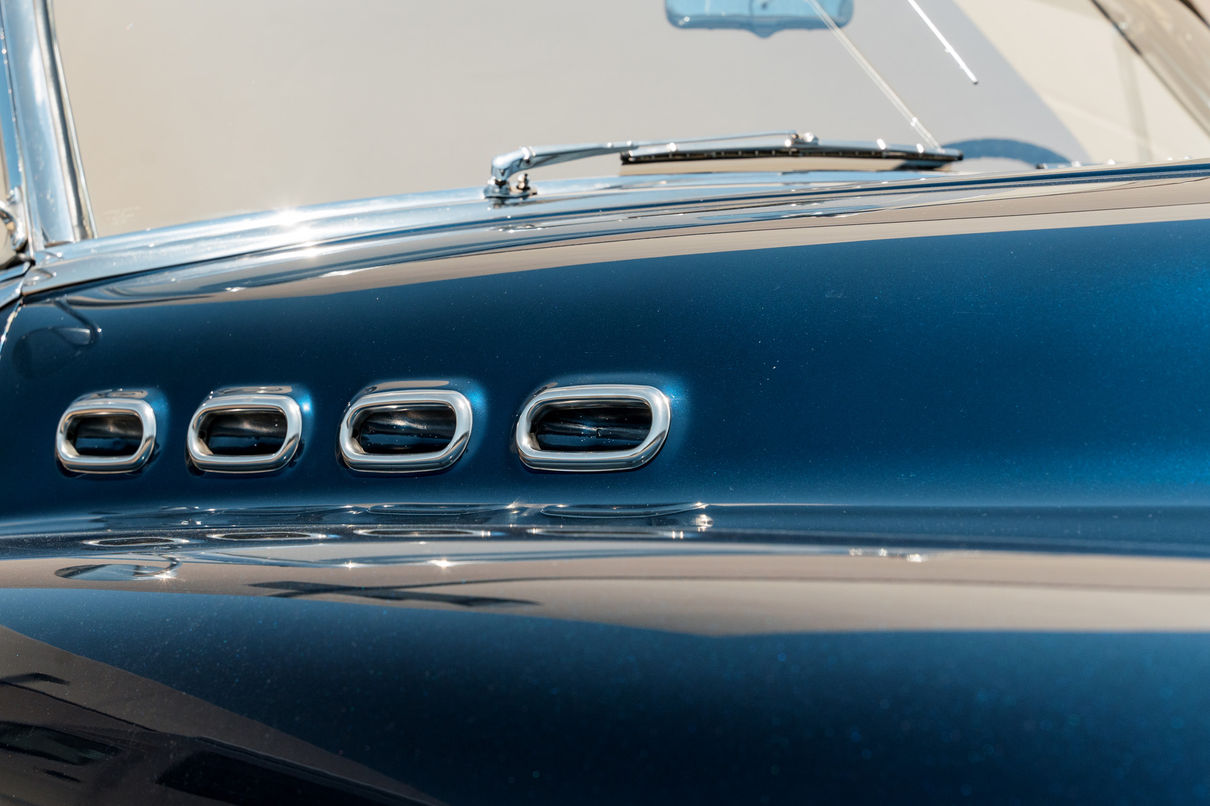Scroll down for description and more information
Click the main photo to enlarge
1950 Buick Roadmaster Convertible
1950 Buick Roadmaster Convertible
Engine - 320 cubic-inch OHV Straight-8
Transmission - Dynaflow Drive
Horsepower - 152 at 3600 rpm
Production - 2,964 2-door convertibles for 1950
“Beauty on Duty”
The Buick Roadmaster had its first major postwar redesign in 1949, when the wheelbase and length were shortened, although weight had increased. This was also the year that Buick introduced the iconic “VentiPorts.” According to Buick, VentiPorts improved ventilation of the engine compartment, but they soon became purely aesthetic. The concept of them originated from a modification made by Buick styling chief Ned Nickles to his personal 1948 Roadmaster. He added four amber lights on each side of the car's hood, connected to the distributor to flash in synchronization with each cylinder firing (resembling the flames from a fighter airplane's exhaust stack.) Buick executive Harlow Curtice was so impressed by this idea that he demanded the installation of (non-lighting) VentiPorts on all 1949 Buicks, with the number of VentiPorts (either three or four) reflecting the displacement of the straight-eight engine.
For 1950, Buick redesigned the front grille of the Roadmaster to include thick vertical bars that display a substantial appearance, but also function as protective structural reinforcements to the bumper. Individually replaceable, these imposing chrome bars were bumper guards themselves. By this time, almost all automakers had moved away from straight-eights, yet Buick’s reputation for building solid, luxurious, high-quality cars chartered their continued use through the early-1950s.
A fully-restored example, this 1950 Roadmaster Convertible (Model 76C) features the venerable Fireball inline-eight cylinder engine and Dynaflow Drive transmission for clutchless operation with no gears to shift.














